

How to teach division to primary school pupils who are struggling. Tips from a maths tutor for parents.

Author
Amber Watkins
Published
May 2024


How to teach division to primary school pupils who are struggling. Tips from a maths tutor for parents.

Author
Amber Watkins
Published
May 2024


How to teach division to primary school pupils who are struggling. Tips from a maths tutor for parents.

Author
Amber Watkins
Published
May 2024


Key takeaways
“My child has been doing so well in school… until they started learning division. What happened?”
“My child hasn’t learned division yet, but teaching division is scary. Can you help us?”
“My students love to multiply, but they dread having to divide.”
These feelings are often expressed to me as a maths tutor by parents and fellow educators.
Some parents are eager to learn how to teach division to a beginner. Others would love help learning how to teach division to struggling students. And everyone can use some awesome division resources to help guide us.
Together we will break down my favourite tutoring strategies for teaching divison by year group. These strategies can be used by both parents and teachers to teach beginners and struggling students. Each strategy will include practice activities, helpful tips, and division resources for kids. Finally, we will discuss why maths games can benefit children who are struggling to divide.
Let’s begin!
You don’t have to wait for division to be introduced in school to teach the concept of division at home. Pointing out how we use division in everyday life is a great introduction to teaching division.
Dividing makes sure items are dispersed in a fair and even way: everyone gets the same amount. This is a concept your child will understand and probably love. Who doesn’t like when things are fair?
When teaching online, I usually use pictures to teach division. However, because you are helping your child at home use objects found around your house to introduce division to your child.
Cereal, candy, or playing cards work perfectly for this.
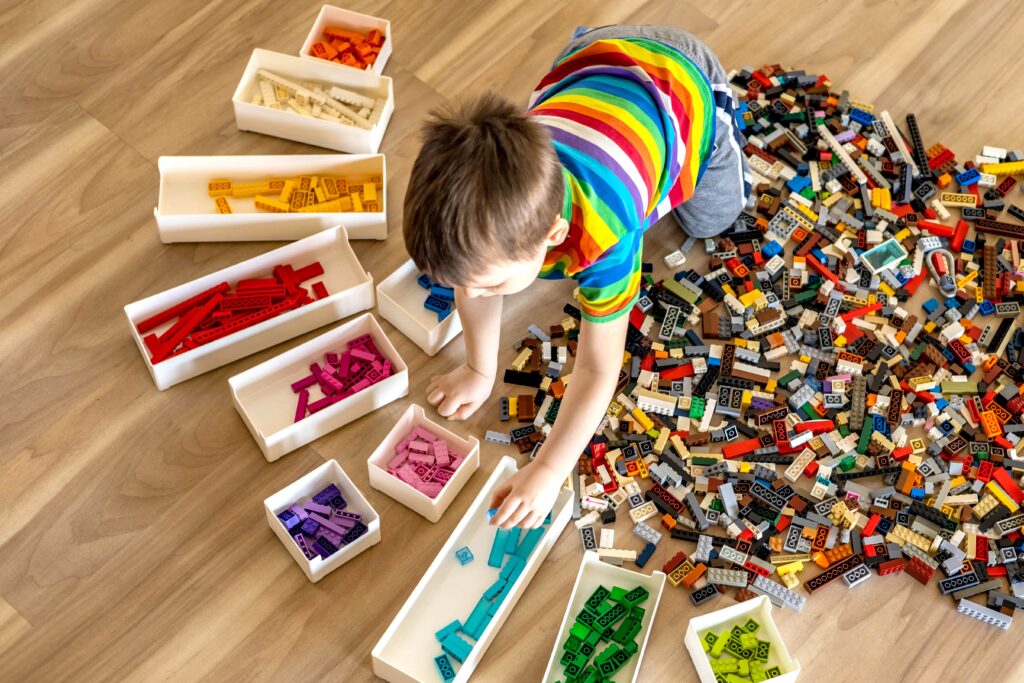
Helpful Tip! Reinforce learning by saying, “When we divide eight pieces of candy between us, how many pieces do we both get to make it fair? [Let your child count the pieces]. Four! Great job!”
Unlock unlimited maths questions
Put your skills to the test with fun exercises + maths games that are proven to boost ability!
Try this!
Distribute more items to one person than the other. Ask your child if this is fair. Then ask them to organise the items fairly. This teaches your child the importance of division before their first problem on paper.
By Year 3, or even younger, your kids are probably learning to do tasks that inherently teach division. For example, cooking or counting money. Lean into the concept of division as you teach these basic tasks for everyday life.
As you teach your child about the value of coins and money, it would be a great opportunity to teach division. How? Show your child £1 can be divided into:
I’ve found asking questions and then saying the division sentence helps your child associate division with money. Ask questions like:
“How many 50p coins make 100p? (100 ÷ 50 = 2)“
“How many 20p coins make up £1? (100 ÷ 20 = 5)”

Helpful Tip! Children who struggle in this activity would benefit from practising repeated addition and skip counting.
Try DoodleMaths for free!
Select a year group
In Year 4 maths, division is formally introduced. The year before in Year 3 maths, they started learning multiplication. One of the key concepts to iterate when teaching division is that division is the opposite of multiplication.
As your child advances to later years, they will learn multiplication facts. Help your child become strong multipliers. This is the biggest step in how to teach division to students.
Year 4 is also the year your child should learn that division is the opposite of multiplication. How do you teach this concept to your child? Provide a few examples for your child to see:
Multiplication 3 x 4 = 12
Division 12 ÷ 4 = 3
Helpful Tip! When helping your child with this activity, encourage them to start by writing a multiplication sentence first, then the opposite division sentence is easier to create.
Using picture models is a great way to help your child visualise division problems. Because division starts with a larger number and breaks it apart into smaller pieces, start with a larger model and see if your child can divide it into fair and even groups.
For example, this picture model has a total of 12 hearts. Encourage your child to divide the hearts into equal groups. They will probably end up doing something like this:
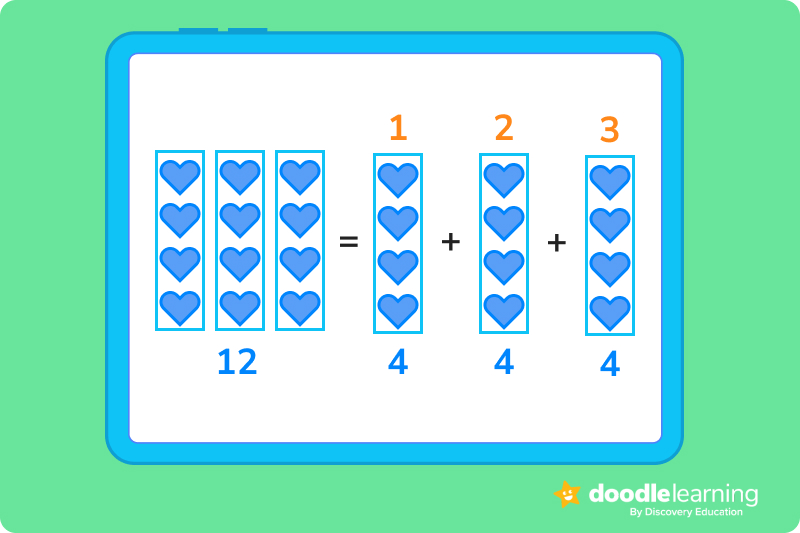
Try this!
Create picture models like the one above to test your child’s knowledge! Draw pictures of a certain number of shapes and ask your child to circle the shapes to make even groups. Then ask your child to help create a division problem based on the shapes they circled.
DoodleMaths is an award-winning app that’s filled with thousands of questions and games exploring multiplication, division and more! Plus, get free access to DoodleTables with any DoodleMaths subscription!
Designed by teachers, it creates each child a unique work programme tailored to their needs, doubling their progression with just 10 minutes of use a day. Try it for free!


Welcome to the world of long division! As your child progresses through primary school maths, division problems become more complex. Here are my top tips for teaching division to upper years.
The first step to learning how to solve long-division problems is to identify the parts of the problem and label them. The parts of a division problem include:
Take the following long division problem and have your child label the parts of the problem as either the dividend, the divisor, or the quotient.
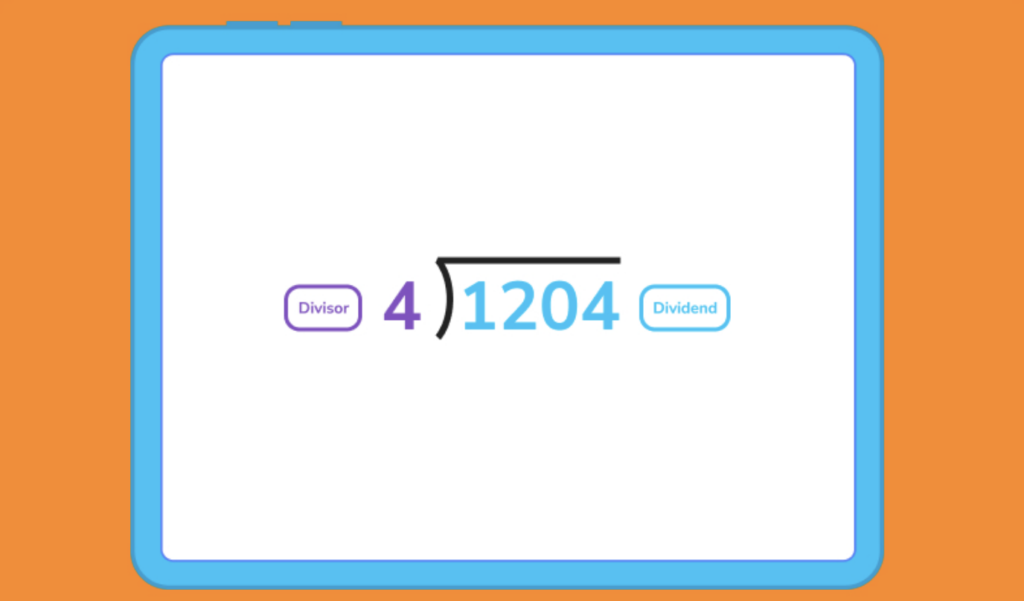
Helpful Tip! In my tutoring sessions, I find it helpful to spend extra time practising the parts of a division sentence because it is one of the harder concepts for children to learn. Be willing to spend more time practising, so your child can easily set up a long-division problem.
The next step in how to teach long-division is to help your child learn the steps to a long-division problem.
The steps to long division are:
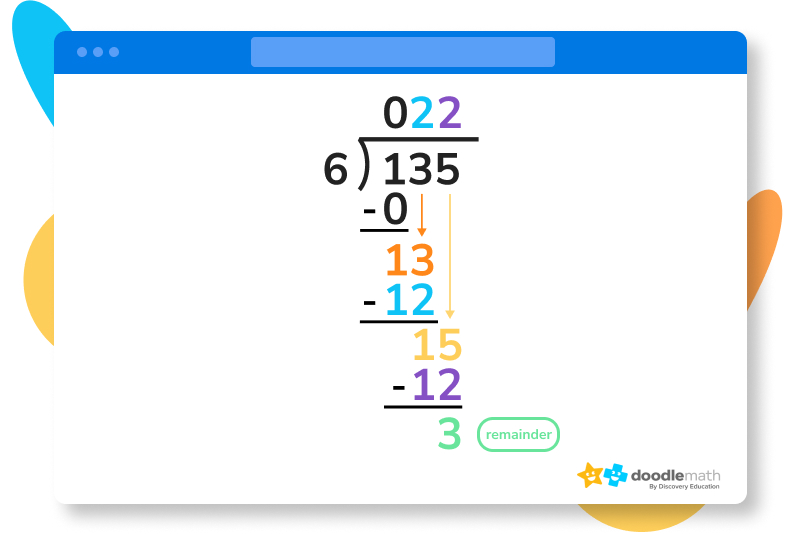
For a full tutorial, check out our guide to long division.
Try this!
As your child is completing long division problems, encourage them to have a checklist of steps next to each problem. I like to write DMSBR (the acronym for the steps divide, multiply, subtract, bring down, repeat) next to every problem. Your job is to help your child stay on track.
Have your child make check marks after they complete each step. I also like to draw an arrow back to the top to remind my students to keep repeating these steps in every problem.
Despite your best efforts, your child may struggle to complete long-division problems. That’s why the new maths method of division teaches dividing using area models. This method help your child break down large division problems into parts.
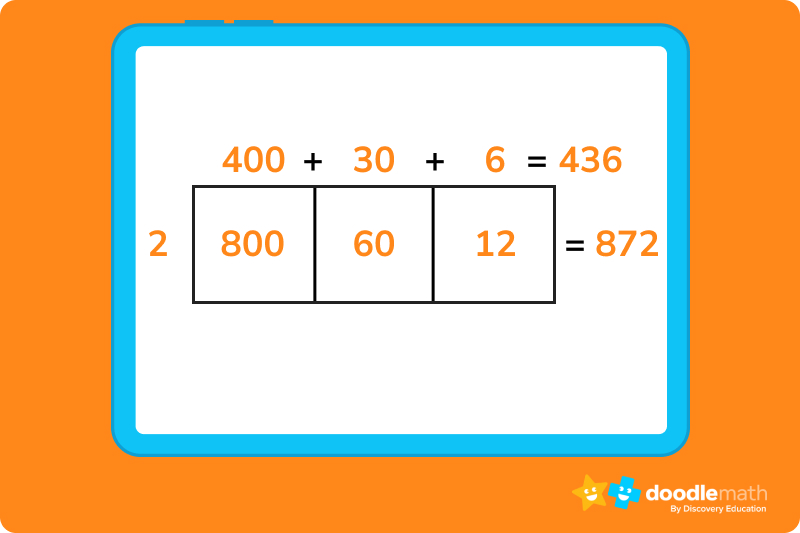
What’s next for your child in learning division?
As your child progresses, they will learn how to divide decimals, divide fractions, and divide while solving real-world word problems.
Now is the time to help your child become a strong divider!
Don’t fret! It is possible and the educators at DoodleLearning are here to help you. Together we have helped to create the best maths app for students to practise their division skills.

Parents, sign up for a DoodleMaths subscription and see your child become a maths wizard!

Lesson credits

Amber Watkins
Amber is an education specialist with a degree in Early Childhood Education. She has over 12 years of experience teaching and tutoring primary school through university level maths. "Knowing that my work in maths education makes such an impact leaves me with an indescribable feeling of pride and joy!"

Amber Watkins
Amber is an education specialist with a degree in Early Childhood Education. She has over 12 years of experience teaching and tutoring primary school through university level maths. "Knowing that my work in maths education makes such an impact leaves me with an indescribable feeling of pride and joy!"
Book a chat with our team
If you’d like to use Doodle’s browser version, please visit this page on a desktop.
To log in to Doodle on this device, you can do so through our apps. You can find out how to download them here: